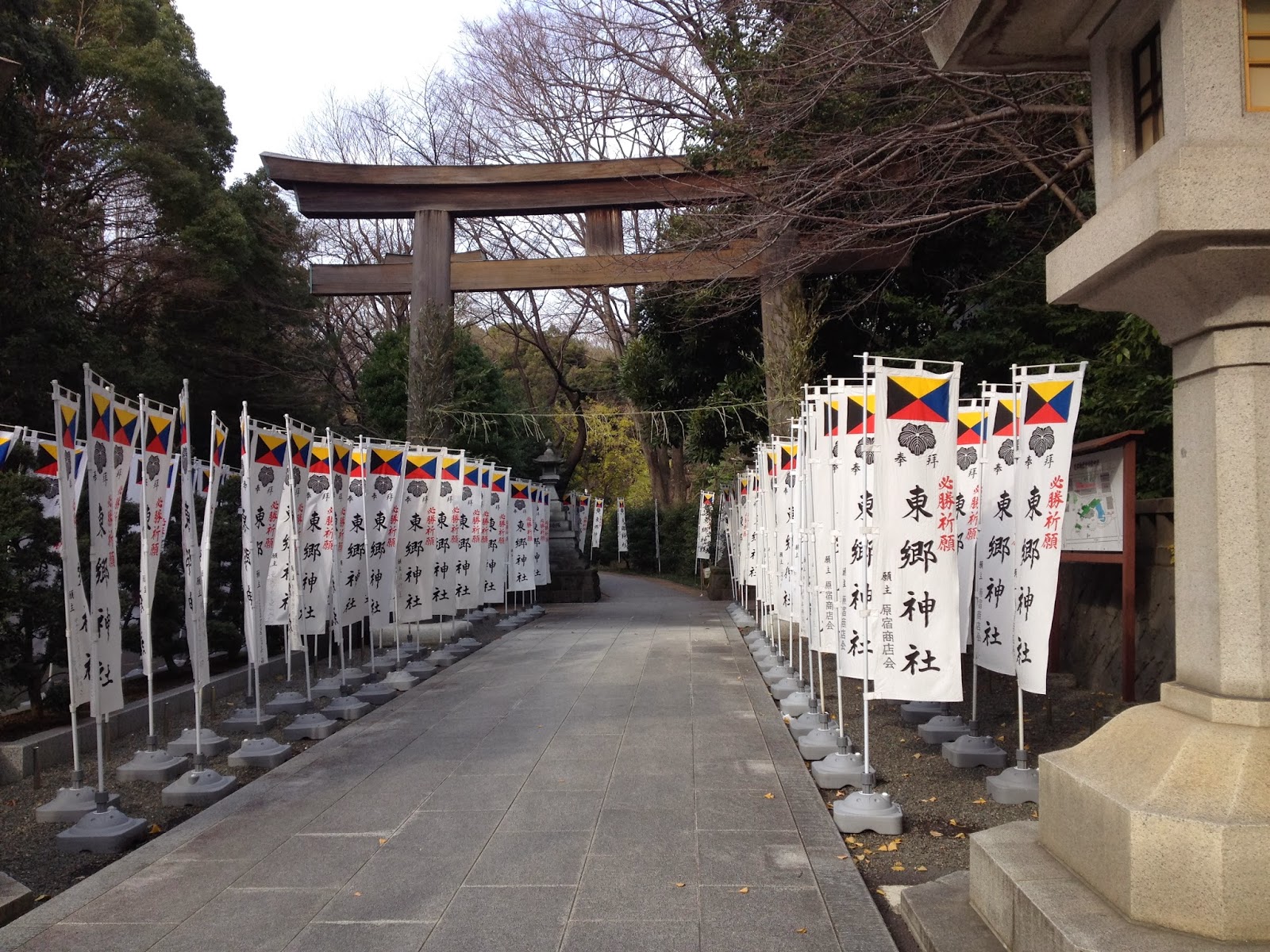Sabishii no Tabi part 4
- 神社 -
- Jinja -
(Shrine)
*technically there's different words for different types of temples, shrines etc... but Jinja I believe is one of the commonest word used to describe Shinto/Buddhist place of worship in Japan.
Japan's main religion is Shinto Buddhism, a japanese once told me its a combination of Buddhism and Shintoism is animism practised by Japanese before Buddhism came. If you want to know more please read about it, I wont pretend I'm an expert in Shinto Buddhism.
Japanese temples/shrines is one of the nation's main tourist attractions. Similiar to Koen (park), in the middle of concrete jungle in big cities like Tokyo, one can often find a Jinja (whether big or small). Furthermore, because Shintoism is very closely related to nature, one can find Jinja at almost every important nature spots such as lakes, rivers, hills etc...
Japanese people regularly visit shrines from young to old. I often see salaryman during working hours making a quick stop at a shrine to pray for few minutes then resuming walking to work. In certain days it can get really2 congested especially during Hatsumode, which I will talk in another post.
So pictures time!!
Zojo-ji - Tokyo
Zojo-ji main building offers a picturesque view with Tokyo Tower in the background.
Some of the charms/prayers plates symbolic to Japanese temple
"Little buddha statue" lined up beautifully
Asakusa - Tokyo
One of the most famous temple in Tokyo. There's a marketplace inside where you can buy traditional stuff and foods.
Entrace
Marketplace - almost always full with people
Main building gate
Main building
Visitors taking in the smoke
Washing hands before praying
Main hall decorated with golden buddhist altar
Visitors praying
Meiji Jingu - Tokyo
A worship place with historical value. There's a main shrine, museums and garden. This area was dedicated to the Meiji's Emperor and the garden was built specifically for his sick wife. Located near the busy shopping district of Yoyogi, Shibuya, Harajuku and Omotesando, this place is truly what'd you call a peaceful haven in the middle of city. Its one of my favourite spot in Tokyo.
The entrance near Yoyogi eki
After the entrace, visitors need to walk around 5-10 minutes to reach the main temple.But the path is very beautiful, you wont feel bored!
Pond inside the garden
During the right season, flowers bloom here! But its winter... so I can only imagine...
Clear spring water found in the garden
Entrace to the main temple
Main temple
Small Jinja around Tokyo
In the middle of parks, its common to find a small shrine
in the middle of the city
Also in the middle of city
In the middle of Kichijoji Koen
Examples of Jinja found in "nature spots"
Near the waterfall located on Takaosan trail
On one of the lakes in Hakone
Kabushima Island in Hachinohe
On one of the rocks formation at Kosode Coast, Kuji
Nara - notice the dear :)
Finally, there's other Jinja I've visited but I will post more about them later in another topic. Sneak peak:
Koyasan
Fushimi Inari
Of course, being a muslim, I did not perform any religious activity there, merely taking pictures and observing.
For me, this is where I pray
Tapi, yang kagum dengan Jepun ni bagaimana mereka boleh jadikan Jinja2 ne bukan sahaja tempat suci untuk orang2 dia, bahkan sangat terbuka kepada orang2 luar yang langsung takdak niat nak beribadat kat situ (macam aku ler...).
Disebabkan itu, bukan sahaja tourism naik, duit masuk semua, tapi ia juga membolehkan orang luar begitu mudah memahami budaya mereka. Ini bagi saya satu perkara yang kita di Malaysia boleh ambil iktibar. Kebanyakkan masjid2 di Malaysia cantik2 binaannya tetapi sayang tidak diwarwarkan supaya orang luar boleh datang dan melihatseni bina dan budaya Islam itu (sambil menghormati orang solat dan menutup aurat la) .
Adalah sesetengah masjid macam kat Putrajaya dengan Terengganu yang saya tahu dipromosi untuk orang luar datang melihat, sepatutnya diperbanyakkan lagi. Seperti contoh, bandar Kyoto - main attraction ialah temple2 die. Bukak la guide keluar list2 temple je banyak. Setiap temple ada sejarah nya masing2 dan seni bina yang menarik. Islam yang juga mempunyai budayanya yang dalam pasti boleh juga sampai ke tahap itu. Nak simpulkan, melawat Jinja2 kat Jepun ne saya dapat merasakan banyak yang boleh kita belajar dari mereka dalam bagaimana mereka menjaga tempat ibadat mereka dan "mempromosikan" agama mereka.
Alright! Next part will be... Biru (building)!



































No comments:
Post a Comment